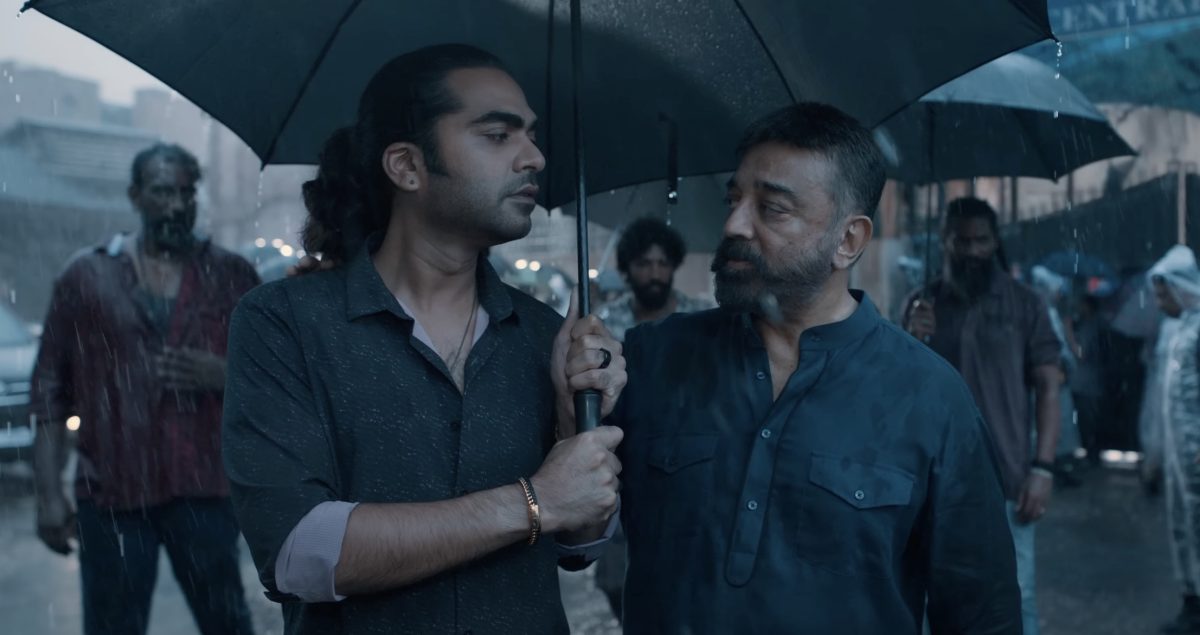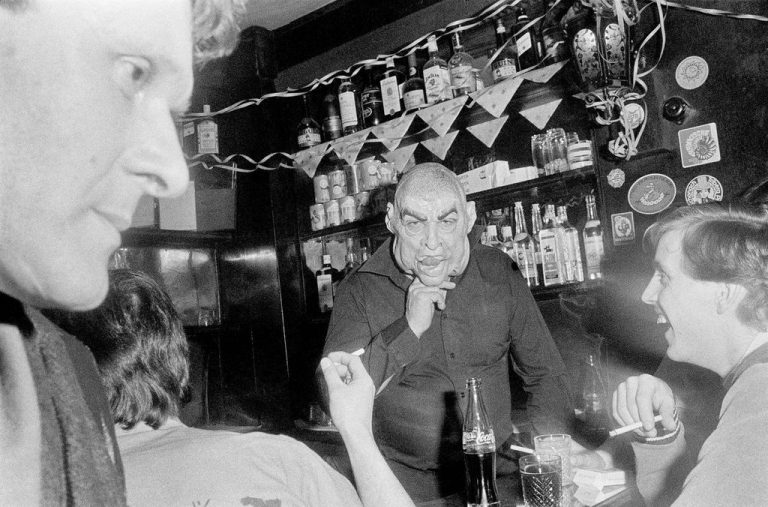Having recently watched Mani Ratnam’s “Thalapathi” (1991) for the first time, I recall with a somewhat baffling fondness the visualisation of the song “Sundari Kannal.” It is a far cry from any sequences set in the present day of the film, as it evokes sequences from Akira Kurosawa’s “Ran” in Rajnikanth’s garments, resembling a samurai, or in his approach to a monument that suspiciously reminds you of the ancient gates in Japan. It is baffling because, irrespective of being clumsy or just for garmenting purposes, Ratnam’s love for Kurosawa is palpable. That love would later be integrated into Ratnam’s powerful use of symbolism or even into the blown-out lighting or the general evocation of a personal epic that he had been trying to bring about in his genre films, succeeding majorly with his 1987 classic “Nayakan.”
The “Nayakan” reference is not without merit. Actor Kamal Haasan reuniting with director Mani Ratnam, 38 years after that seminal film, for his 237th outing seems like a no-brainer. It is generally a good strategy to temper one’s expectations, but how “Thug Life” (2025) manages to squander not just expectations from this combination but also expectations of a half-decent outing is especially galling.
Part of the reason why “Thug Life,” from a story and a script by Kamal Haasan and Ratnam, falters heavily is because of how it is interested in dealing with the ideas in the film rather than any form of exploration of the world within the film or its characters. The opening sequence of Haasan’s Sakthivel letting go of his cloak to face goons head-on, as a voiceover by Sakthivel lays out his relationship with death, forms a fascinating kernel of a concept.
That kernel seems to develop as a flashback sequence in monochrome, laying out the tragedy connecting Sakthivel and young Amar (played as an adult by Silambarasan TR). One could see, as the shaky camera-visualized set piece, complemented by digitally enhanced long takes, progresses through the film, how much the film could ideally deal with the futility of violence and the unexpected connections forged within the crucible of said violence.

A director subverting the audience’s expectations is appreciated, but only when the resulting subversion does have a point. If Ratnam and Haasan’s subversion of expectations in exploring their rich ideas is to craft one of the most predictable gangster plots that could easily have been formulated by ChatGPT, and the execution carries nary a depth, nor has any inclination to let scenes breathe, the film resultantly becomes utterly muddled.
Ideas of the amorality of Sakthivel, or his feisty relationship with his wife Jeeva (Abhirami) and his mistress Indrani (Trisha), feel more inserted within the film as a form of navel-gazing or to write women characters only in service to the men around them, because this is ultimately a gangster world. It acts counter to the promise of the film, which wanted to be more profound, instead dabbling in mediocrity to such an extent, without letting any of its characters bloom, that it ultimately becomes emotionally distant.
If one looks at “Thug Life” from a different angle, gangster movies having templated narratives are nothing new, resting solely on their execution. From that count, Ratnam’s tactic of moving from one scene to the next feels lazy, as it lets the audience rely on their implication of character motivations from the template’s machinations without giving ample time to show those machinations. Thus, every event—Sakthivel being jealous of his protégé, Amar being manipulated by Sakthivel’s brother and other members of Sakthivel’s gang, the impactful moment of Sakthivel’s apparent death, Sakthivel’s return to exact revenge—feels like checkpoints in an outline rather than actions driven by emotions.
Thus we are left with a preening, manipulative Sakthivel played by Haasan; an emotionally earnest and yet intense performance by Silambarasan TR as Amar; a haughty and yet emotionally insecure performance by Nassar as the elder brother of Sakthivel; AR Rahman’s overwhelming background score shifting after every two seconds with jarring disjointedness compared to the action being visualized; choppy action set pieces complemented by speed ramps of action beats and over-reliance on mocobot; and ultimately an emotional catharsis that comes only towards the final forty-five minutes.

When almost nothing in a movie works, what does work tends to stand out more. Rahman’s album with his songs does work in the evocation of the cavalier and the epic juxtaposed together, which the film utterly fails at. The cavalier and gruff banter between Sakthivel and Amar, or Haasan’s gruff lines inundated with romance towards his wife, does work in eliciting comedy or any form of emotion.
It’s a decidedly different question to ask why the subplot of the mistress and the Oedipal complex stemming from the love triangle between Sakthivel, Amar, and Indrani is even included in the film, much less mentioned. Ratnam tries to salvage that barely outlined triangle in a scene on the beach towards the tail end of the film, where Amar and Indrani try to confront their inner demons and each other. The resulting chaos of overlapping dialogues meant to evoke Altman is so shakily staged that it comes out clumsy and utterly forced.
The only moments of honest emotional catharsis come towards the tail end of the film. After having elevated Haasan to an action superstar, it finally chooses to focus on the meat of the bone—the emotional arc of Amar. However, the honesty of that catharsis could only be attributed to Aishwarya Lakshmi’s affecting performance rather than the extremely rushed execution of the same.
As the movie ambles messily towards its end, you are left with an emptiness rushing to be filled with disappointment, due to expectations from this reunion. But what it ultimately produces within a viewer is anger giving way to indifference—at a filmmaking collaboration that feels utterly out of touch not just with modern storytelling, but with storytelling itself, so enamoured to depict the vagaries of a template that it forgets to develop its core idea until its final moments, and by that point the viewer is too checked out to care.




![Turbo Cola [2022] Review – A Cool Drink Kinda 90s-Style Coming-of-Age Film](https://79468c92.delivery.rocketcdn.me/wp-content/uploads/2022/06/Turbo-Cola-Movie-Review-1-768x322.jpg)



![No Fathers in Kashmir [2019]: ‘HFF’ Review – An Outsider’s perspective that imperfectly tells the story of Kashmir](https://79468c92.delivery.rocketcdn.me/wp-content/uploads/2019/05/No-Fathers-In-Kashmir1-768x419.jpg)
![Demolition Girl [2019]: ‘Japan Cuts’ Review- A Soul-Crushing Coming-of-age Drama](https://79468c92.delivery.rocketcdn.me/wp-content/uploads/2019/08/D-Girl-1-548x365.jpg)